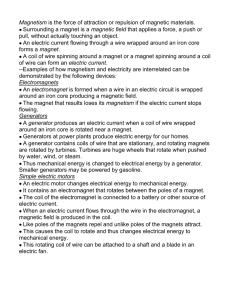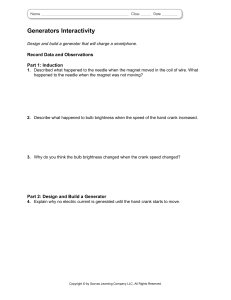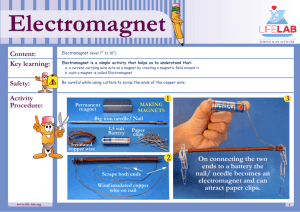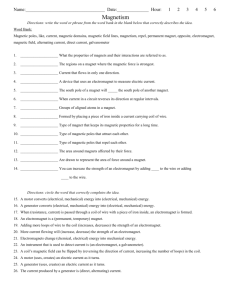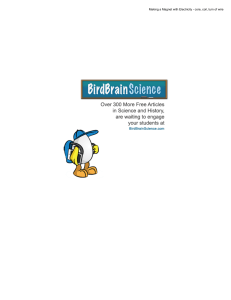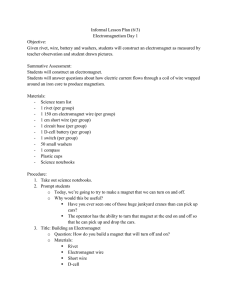Generators and Motors
advertisement
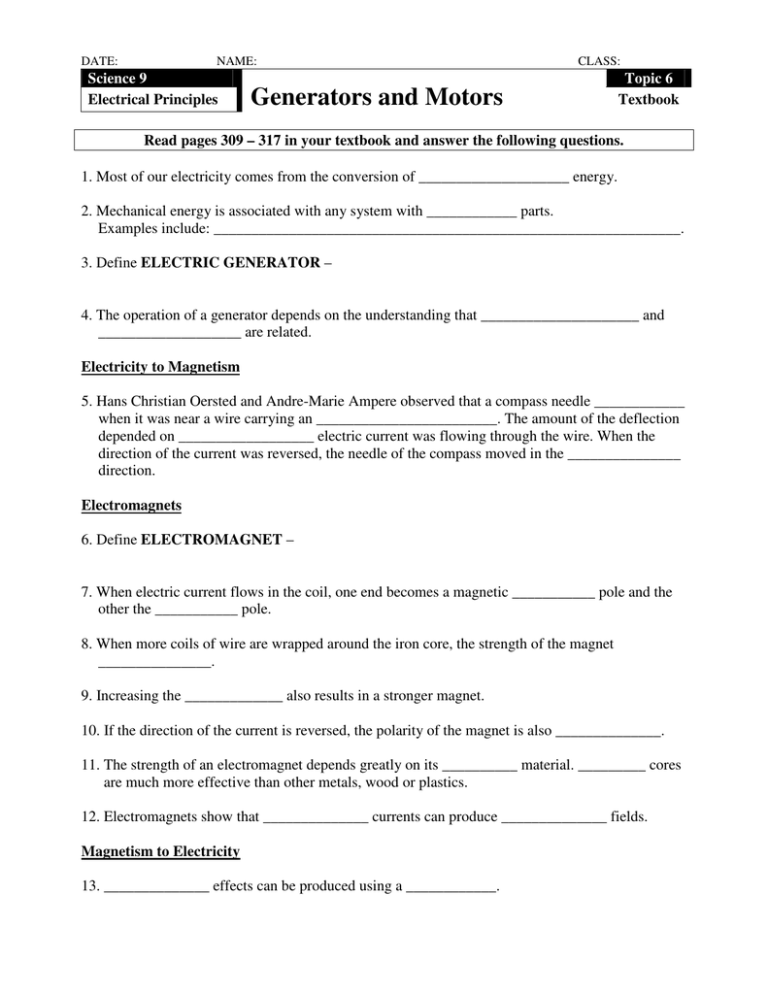
DATE: NAME: Science 9 Electrical Principles CLASS: Generators and Motors Topic 6 Textbook Read pages 309 – 317 in your textbook and answer the following questions. 1. Most of our electricity comes from the conversion of ____________________ energy. 2. Mechanical energy is associated with any system with ____________ parts. Examples include: ______________________________________________________________. 3. Define ELECTRIC GENERATOR – a device that converts mechanical energy into electrical energy 4. The operation of a generator depends on the understanding that _____________________ and ___________________ are related. Electricity to Magnetism 5. Hans Christian Oersted and Andre-Marie Ampere observed that a compass needle ____________ when it was near a wire carrying an ________________________. The amount of the deflection depended on __________________ electric current was flowing through the wire. When the direction of the current was reversed, the needle of the compass moved in the _______________ direction. Electromagnets 6. Define ELECTROMAGNET – magnet created by wrapping a coil of wire around an iron core and passing a current through it 7. When electric current flows in the coil, one end becomes a magnetic ___________ pole and the other the ___________ pole. 8. When more coils of wire are wrapped around the iron core, the strength of the magnet _______________. 9. Increasing the _____________ also results in a stronger magnet. 10. If the direction of the current is reversed, the polarity of the magnet is also ______________. 11. The strength of an electromagnet depends greatly on its __________ material. _________ cores are much more effective than other metals, wood or plastics. 12. Electromagnets show that ______________ currents can produce ______________ fields. Magnetism to Electricity 13. ______________ effects can be produced using a ____________. 14. An electric current will flow in a circuit, but only as long as either the __________, or the ____________, or __________ were moving. 15. Wrapping the wire into a coil around the magnet _______________ the current. 16. When there is relative motion between the wire and a nearby magnet, we have created an _____________ current. 17. This connection between magnetism and electricity was used to develop ____________, ________________, and other electrical technology. What’s in a Generator? 18. Define AC – alternating current - when the current in a circuit “alternates” or changes direction 19. One advantage about using AC is that it is relatively easy to ____________ (for long distances) or ______________ (for consumer use) the voltage of alternating current. 20. Generators that produce alternating current are called _________________. DC Generators 21. Define DC – direct current - when the current in a circuit flows in a continuous direction 22. A generator that produces direct current is called a ____________. 23. A typical DC generator has a split-ring _______________ so it sends a current through a circuit in only one direction. 24. The current electricity that is produced by a DC generator and a battery is not the same. Explain why not. Batteries provide a smooth continuous current. DC generators produce pulses of current (that coincide with it spinning) Electric Motors: 25. Define MOTOR – converts electrical energy into mechanical energy DC Motors 26. How does an electric motor work? Use Pg 315 for help. Current flowing through the coil turns it into an electromagnet. The electromagnet is rotated around by the field magnets surrounding the coil.
